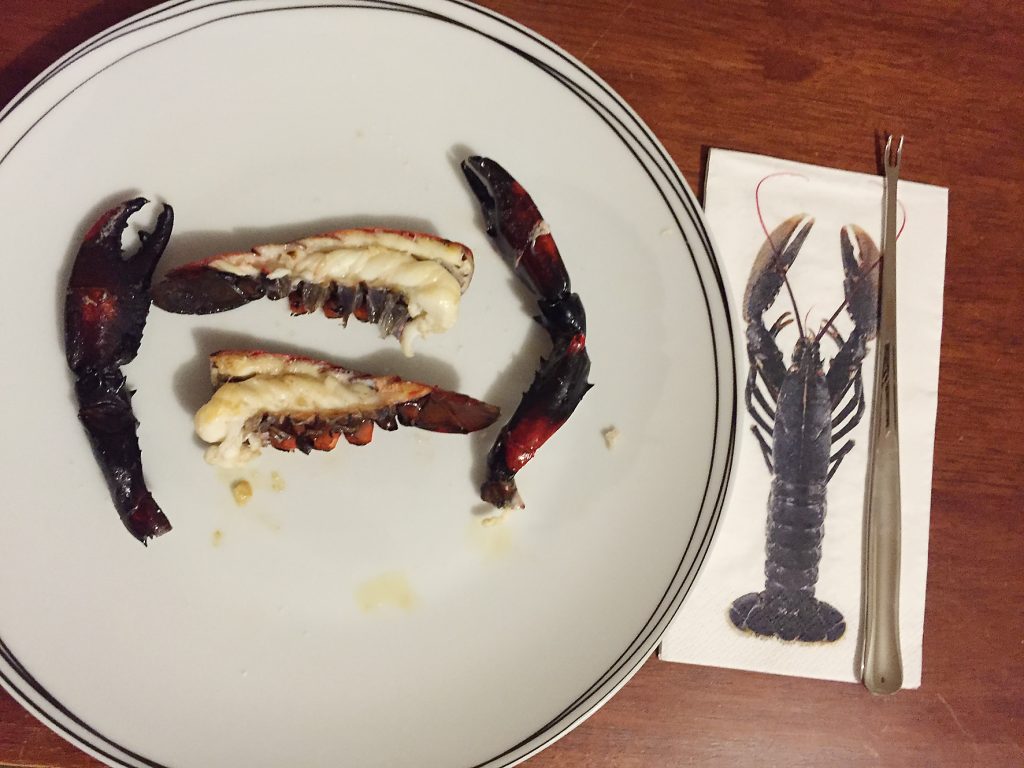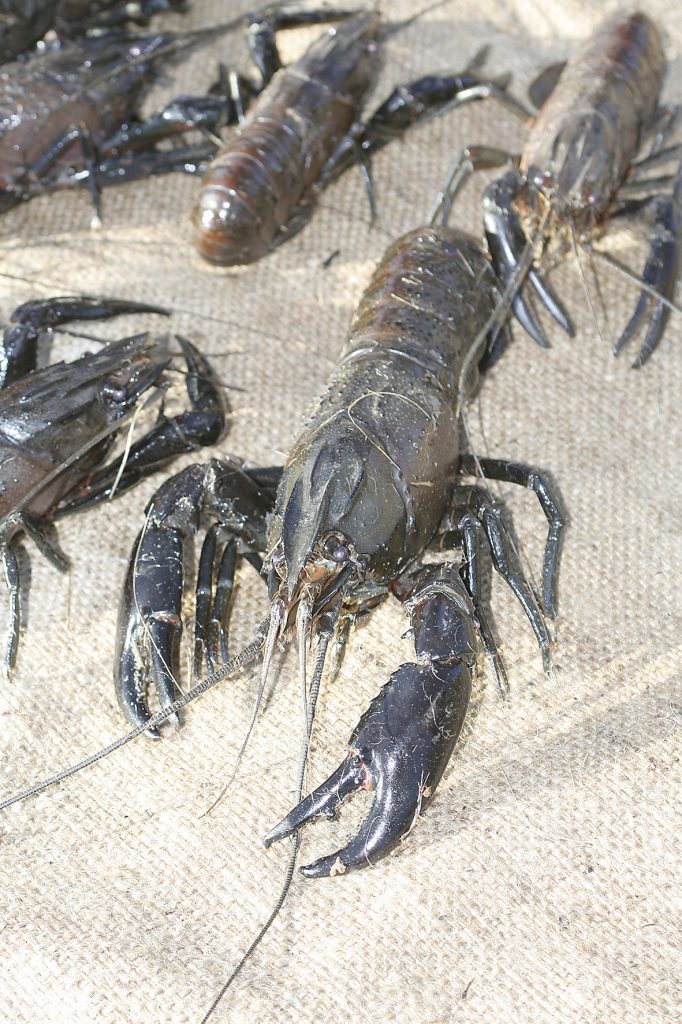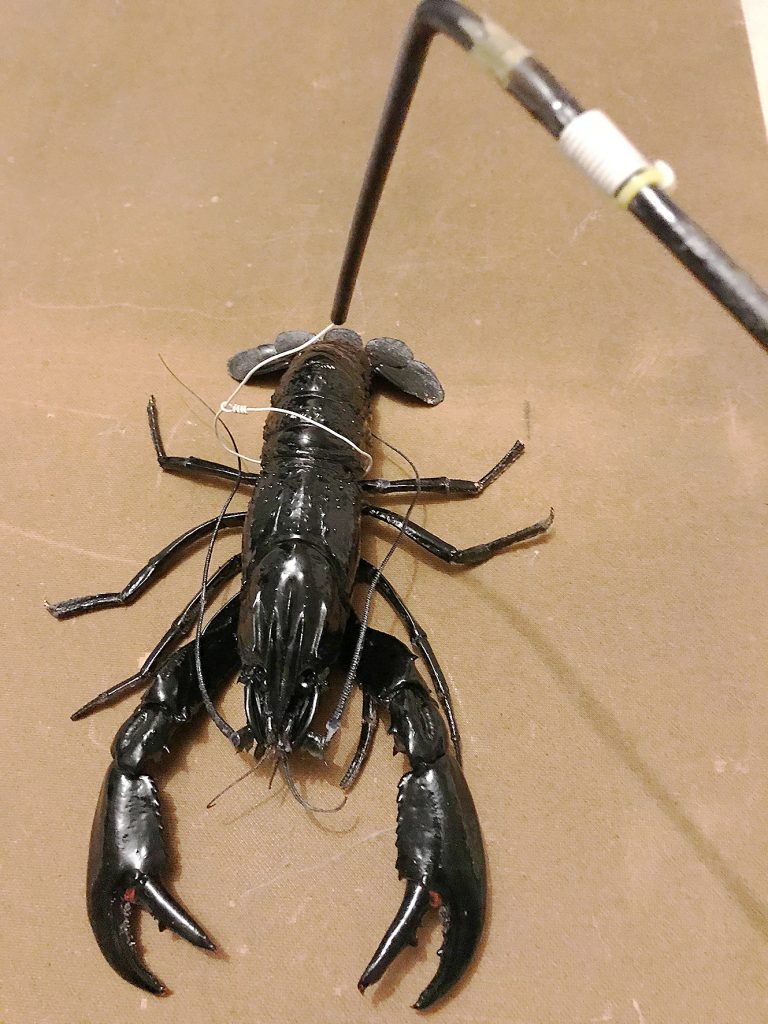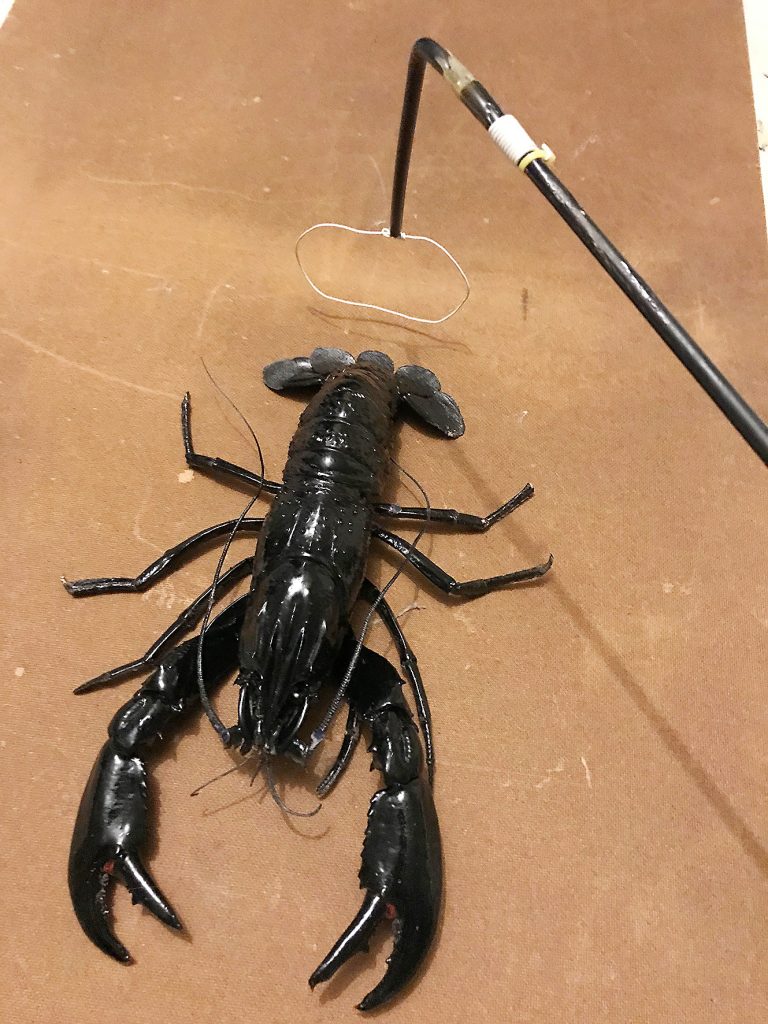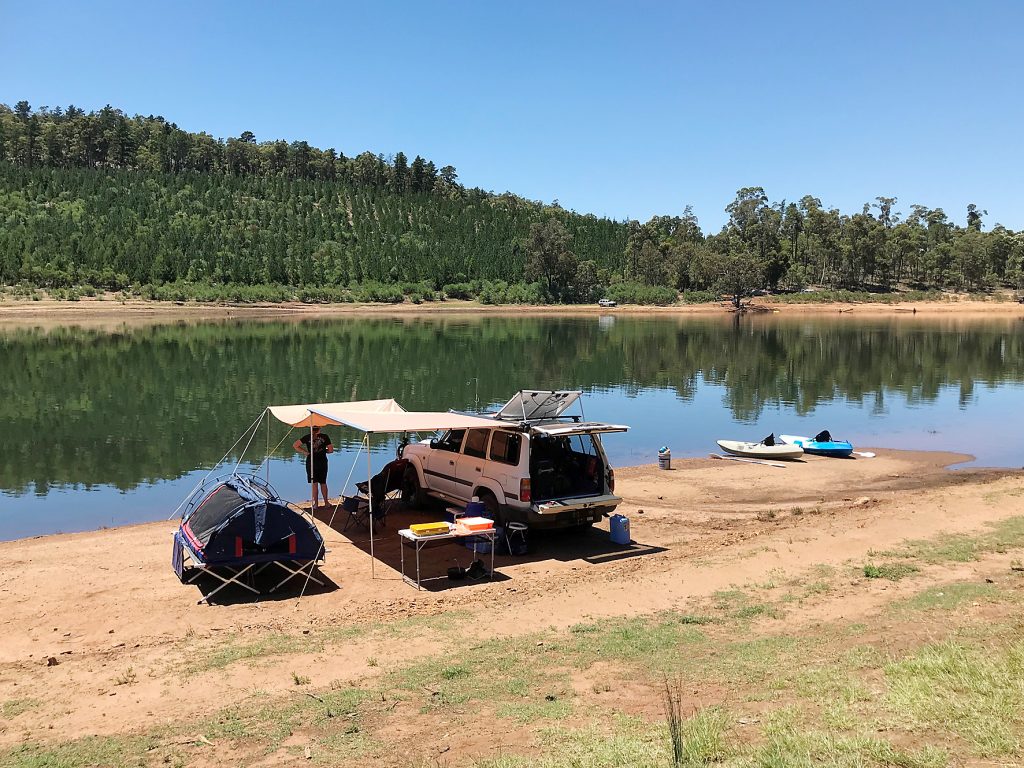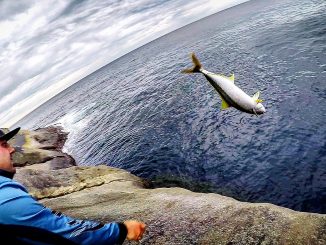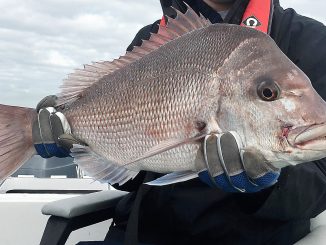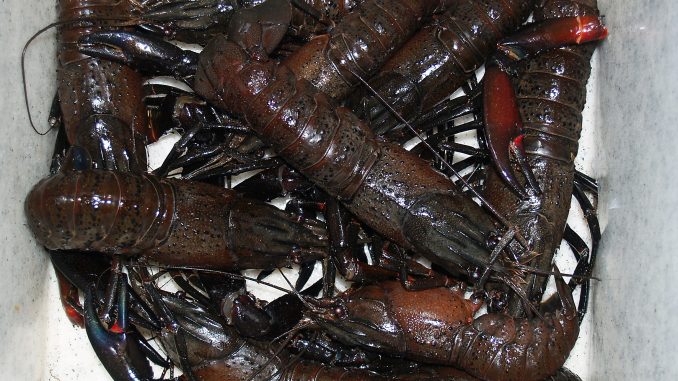
by Kurt Blanksby •
There is something so exciting about shining the torch light into the shallows just after dark every January when the marron season starts. Seeing those big black freshwater crayfish materialising out of nowhere to feed on the baits in only inches of water is totally captivating, and catching them becomes your soul purpose and nothing else can draw your focus away from attempting to do so.
History
For thirty years now I have participated in marron season every summer and have seen what I consider the best years and the worst. The season was closed for several years at one stage to allow stocks to recover and although I consider stocks to be OK, the illegal poaching and fishing methods has certainly taken its toll on our once trophy water – Harvey Dam.
For the last 20 years I have never seen a Fisheries Officer while marroning, but I have personally witnessed so many illegal activities and seen blatant use of illegal gear, traps and fishing out of season. It makes me wonder how it all goes unnoticed. Sure there was several high profile prosecutions by Fisheries over the years of people caught doing the wrong thing, but these are few and far between.
Even seeing Fisheries Officers patrolling would be a better deterrent to those planning to do the wrong thing, so I would dearly love to see a couple of the guys drop by and check licences, gear and have a friendly chat to all of us participating in the season. I know they are stretched to the limit and they do participate in surveillance activities, but this is not enough to keep the majority of wrong doers from pilfering a very delicate fishery.
Meet the marron
Aright, enough of me getting on my high horse, let’s get back to the basic nuts and bolts when it comes to catching these freshwater beasts. Marron are our third largest freshwater crayfish and are endemic to Western Australia, however they have been translocated through most of the south west and reach up as far as the Hutt River near Northampton.
A limited season of a month each January and strict size and bag limits apply, and you must buy a licence to fish for them. Make sure you check out the legalities online and buy a licence before you head out. Of all the methods, I prefer the pole snare technique, which is by far one of the most enjoyable and is highly effective once you hone your skills.
Where
Marron can be caught from many irrigation dams, rivers and streams, however I prefer the big irrigation dams that are open to fishing, namely Harvey Dam. This particular water is classed as a trophy water so it is snare only and has a larger minimum size of 90mm carapace length. That is from the tip of its longest point on the nose to the part where it joins the articulated tail. Having seen and caught marron up to 150mm carapace length in the past, you can see that their potential to grow to a bragging size is there. A bag limit of five marron per fisher per day (12 noon to 12 noon) applies to this water, but trust me, five marron of legal size are pretty big, so this is a fair bag limit.
Other trophy waters are Waroona Dam and the Hutt River, where these regulations apply, but for any other open water the bag limit is eight marron per day and a carapace measurement of 80mm. Proper wire based marron drop nets and wire scoop nets are allowed to be used in some waters, but again check the regulations online before you head out.
I like to get to my chosen location early in the day, the main reason for this is to secure a spot for the nights marroning, as it is a very popular past time and pushing in on someone else’s area is not going to be greeted well. Once I am set up I mark out a section of bank, being mindful that space is limited and not taking too much ground that would prevent others from finding a spot. I check out the water depth, the slope of bank and clarity of the water, as once darkness falls I want a steadily sloping bank adjacent to deeper water where the biggest marron will move in from.
If possible I prefer a gravel or sand section over mud, and although this is not always possible when the shallows become stirred up and silted, your visibility will be extremely limited. Try to pick a section of water that is on the sheltered side of the wind, noting that late in the day the sea breeze might prevent you from seeing into the choppy shallows. The same goes if the easterly wind kicks in too early after dark. Your once calm sheltered location will turn into a soupy mess, preventing you from seeing, let alone catching any marron.
Baiting up
Bait is easy. Commercially made chicken laying pellets bought from any stockfeed supplier is clean and effective. I usually purchase a 30kg bag, which will allow me to bait up on several trips during the season. Marron love these pellets and they also have the added advantage of being white, so when a cupful is places in the shallows any feeding black marron will contrast against the white of the pellets making them easy to spot and snare.
Snaring the prey
A big mistake I see so many people making is putting their baits out too far from shore. You only need to put them no further than 60cm (2ft) from the shore, as marron will venture right up to feed. If you put them further out you will then have the marron in deeper water making their escape easier and you will muddy up the shallows wading out to try and catch them. You’re much better off keeping your feet out of the water and bringing the marron in to you.
The next mistake is people using a snare that is not long enough. I have made my snares out of old 3m fishing rods with a 90° bit of plastic tube coming off the end. This short dogleg at the end of the snare pole has the thin white plastic coated electrical wire running through it and is tied off on the tip of the rod. With a self-tightening loop on the business end this allows me to drop the snare over the back of the marron and gently move it up over the tail to where the carapace joins. Once in place a quick lift upwards tightens the snare around the marron and it can be easily lifted from the water and up onto dry land.
It sounds tricky, but with some practice it is very easy and highly effective, great fun and without doubt the best way to catch these creatures. Once snared the marron needs to be carefully removed from the snare, all the time avoiding their powerful claws that will deliver a painful nip. They should then be measured to make sure it is of legal size. If it’s too small it must be put back into the water immediately, and if it’s legal size it can be put into a damp hessian bag where it will stay cool and calm while you continue marroning along the bank.
Your baits should be placed every 10m or so along the bank in the stretch of water you are marroning, and by quietly moving along and shining a torch on and around each bait you should spot any marron moving in or feeding. If they are too deep and not quite on the bait, turn your torch off and wait, usually they will keep walking into the shallows to feed. Trying to snare a marron in deeper water can mean you will only get one shot at it and if you miss it will dart backwards into the safety of deeper water. If you let it come in and start feeding you will have a better chance and numerous chances of getting the snare around its tail.
If you work with a partner it can pay off. As one of you positions your snare behind the marron, the other can gently touch it on the nose to make it move backwards into the other snare. By using teamwork you can take turns at snaring marron until your bag limit is reached. Although it is tempting, don’t try and snare a marron by its claw. If you are successful in tightening the loop often the marron will shed the claw as you try and lift it from the water. Only go for the tail and be patient; the higher up the body you move your snare the less chance of the marron slipping out of it. Trying to lift the snare too soon before the whole tail is through the snare loop will usually result in you not being successful, as the snare needs the weight of the marron to tighten, and just the tip of the tail will only lift the animal up and the loop will slip free.
Usually I find the first walk or two after dark the best, as this is when most marron have eagerly made their way into the shallows for a feed. Numbers will generally taper off for the next few walks, as spooked or fed marron will retreat to the cooler, deeper water again. Then a second run will start when often the biggest most cautious marron will make their way into the shallows, so a long late night marroning can be the norm.
Caring for your catch
You will either reach your bag limit or eventually tire and head for bed, and at this stage the live marron can be kept together in the wet hessian sack and put in an esky to stop them escaping overnight. If kept moist and cool they will live for a day in this way, so it is important not to subject them to heat or direct sun, and the same goes for keeping them in a bucket of water, which will eventually run out of dissolved oxygen and the marron will die.
When I get home I put the wet hessian sack in the chiller section at the bottom of the fridge for a few hours to slow the marrons metabolism down, then when ready to cook I take them out and drive a knife between the eyes to humanely kill them before cleaning them down for cooking.
Most people boil marron whole, and although this method is still very effective, I prefer to half the tails and cook them on a BBQ plate with lots of butter and a hint of garlic and salt. Claws can be cooked the same way and have a different taste and texture to the tail meat.
Marroning is a very enjoyable and rewarding experience for adults and kids alike, and it is purely a West Australian activity that is eagerly looked forward to each year. It combines the great outdoors with the thrill of catching a feed on a warm summers night. Please be responsible and do the right thing if you plan to give it a go. If you do, you will no doubt have plenty of laughs and build great memories of going marroning!

